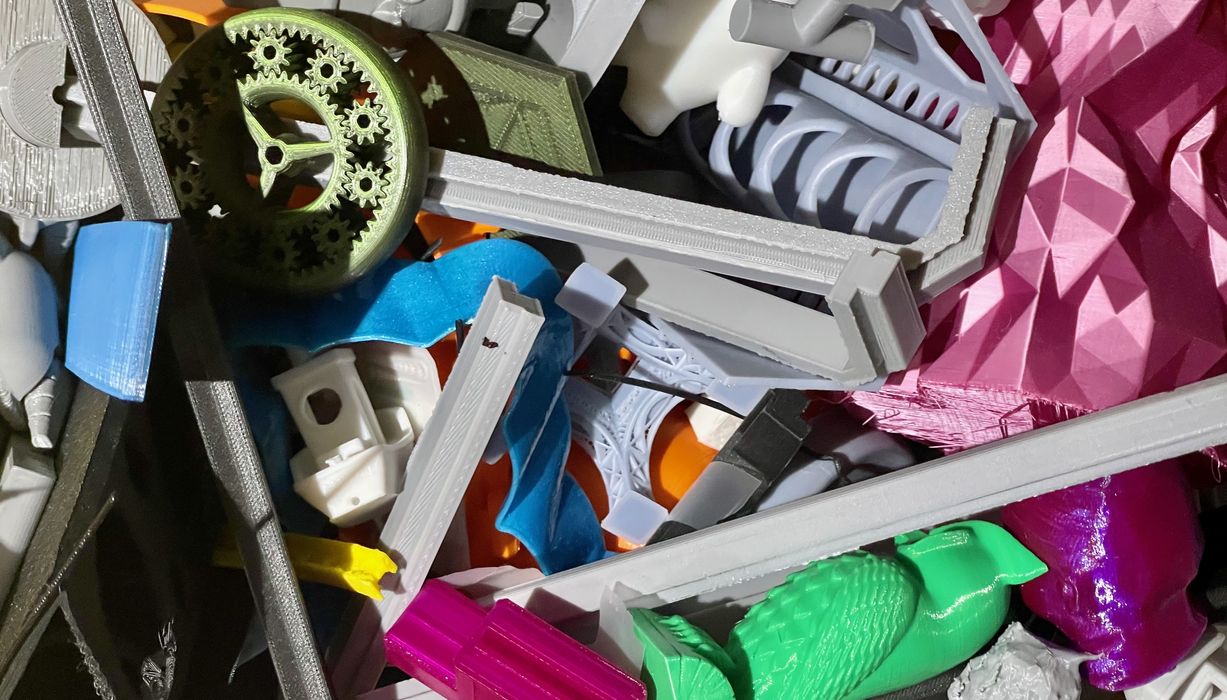
New research on advanced enzymes may eventually lead to solutions for the 3D printing industry.
New research on advanced enzymes is sparking excitement, with the potential to offer solutions for the 3D printing industry’s waste issues.
The research revolves around modifications to an enzyme known as “PETase”, which has the ability to degrade PET (polyethylene terephthalate) — a material frequently used for drink bottles — into its monomer components. To give you an idea of scale, a staggering 82 million tonnes of PET are produced annually, with the majority never finding its way to recycling.
A fraction of this PET is utilized by 3D printers, creating everything from scraps to plastic dragons. These often unwanted items, produced in abundance, usually end up in landfills. Every 3D printer operator I’ve encountered has a box of plastic debris that, frustratingly, can’t be effectively recycled. The problem is only growing with time.
The Challenge with PETase and The Birth of Fast PETase
But why don’t we just use PETase to break down these PET scraps? The problem lies in the fact that PETase only functions under very specific and often impractical conditions. Namely, it needs a high temperature and an extended period to do its job. It’s simply not feasible for keeping pace with current PET production volumes.
This is where the ingenuity of researchers shines. They engineered a new enzyme, called “Fast PETase”, using some smart chemistry. By borrowing samples from similar enzymes, they discovered that swapping six specific amino acids would allow the enzyme to operate at lower temperatures.
Fast PETase can work efficiently at a mere 50°C, a temperature easily achieved. In fact, this temperature is so attainable that one could imagine a backyard solar device capable of reaching it.
The Crystallinity Catch and Future Prospects
However, there’s a catch: Fast PETase only works on PET with low crystallinity. As the crystallinity increases, the rate of progress decreases. This meant that for the research experiments, test drink bottles had to be melted down into low-crystallinity pucks.
This pre-melting step adds an energy cost to the process, but the researchers were still able to completely decompose a PET drink bottle (in puck form) in just a week at 50°C. Quite impressive, though not yet ready for widespread application.
The silver lining is that research like this is happening across the globe. It’s highly probable that someday, a modified enzyme capable of consuming common forms of PET at reasonable temperatures will be discovered.
I envision a future where a 3D printing setup includes a recycling unit. Operators could discard PET scraps into the unit, where they’d gradually decompose into monomers, similar to a compost heap.
The remaining question is what to do with these monomers. In a compost heap, the product is used for gardening. But what’s the equivalent process for monomers? Could we apply energy to reform them into fresh material, or would they need to be returned to a central depot for more advanced processing?
Ultimately, I’m hopeful for a recycling unit that can handle more than just PET. Fast PETase was developed through an AI tool, and similar approaches might be considered for other materials. With the development of additional enzymes for commonly used materials like ABS, PLA, and PA, a universal recycling unit could be within reach.
It may be a far-off future, but for now, keep collecting those plastic dragons!
Via Read Codon
